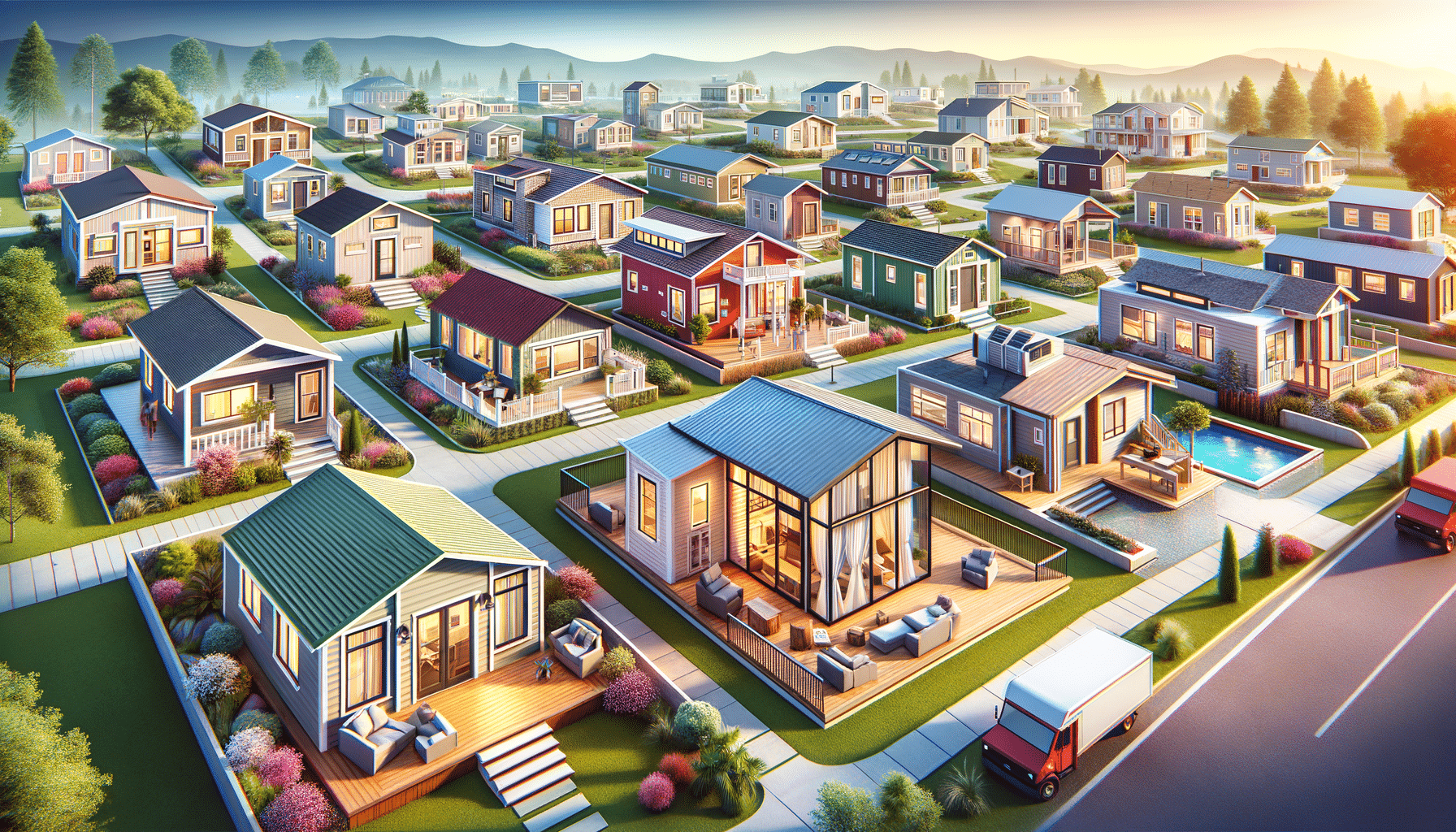Discover the Cost-Effective Nature of Manufactured and Modular Homes
Manufactured homes, also known as modular, prefab, or mobile homes, offer a cost-efficient solution due to their well-organized production processes and reduced construction costs. These homes are assembled in factories, which allows for significant savings in labor costs. The use of uniform materials and designs further contributes to their affordability, making them an attractive option for many homebuyers.

Understanding Manufactured and Modular Homes
Manufactured and modular homes have become increasingly popular as affordable housing solutions. These homes are built in a controlled factory environment, which helps in maintaining quality and reducing waste. Manufactured homes, sometimes referred to as mobile homes, are constructed on a permanent chassis and can be relocated, whereas modular homes are built in sections and assembled on-site. The key difference lies in their construction and transportation methods, impacting their cost and flexibility.
The controlled environment of a factory ensures that materials are not exposed to weather conditions, which can lead to delays and material damage in traditional construction. Moreover, the factory setting allows for a streamlined process that reduces labor costs and increases efficiency. This efficiency translates into significant savings for homebuyers, making these homes a viable option for those seeking cost-effective housing solutions.
Modular homes offer the additional benefit of customization, allowing buyers to choose from a range of designs and layouts. This flexibility does not compromise the quality, as these homes must adhere to strict building codes and standards. The combination of affordability, quality, and customization makes manufactured and modular homes an appealing choice for many.
Comparing Costs: Manufactured vs. Traditional Homes
One of the most significant advantages of manufactured and modular homes is their cost-effectiveness compared to traditional homes. Traditional home construction involves various expenses such as labor, materials, and time, which can quickly add up. In contrast, manufactured homes are built with cost-saving measures that make them more accessible to a broader audience.
The cost of a manufactured home can be significantly lower than that of a traditional home. This is largely due to the efficient use of materials and the reduced labor costs associated with factory construction. Additionally, manufactured homes often require less time to build, further reducing expenses related to construction delays and extended labor.
For those looking to purchase a home, the savings associated with manufactured homes can be substantial. These homes typically offer a lower price per square foot, allowing buyers to get more space for their money. Furthermore, the ability to customize modular homes means that buyers can tailor their living space to suit their needs without incurring the high costs often associated with custom-built traditional homes.
Environmental Benefits of Manufactured and Modular Homes
Beyond affordability, manufactured and modular homes offer several environmental benefits. The construction process of these homes is designed to minimize waste, utilizing precise measurements and efficient material use. This approach not only reduces the environmental impact but also contributes to the overall cost savings for the consumer.
Moreover, the energy efficiency of manufactured homes is often superior to that of traditional homes. Many manufacturers incorporate energy-efficient features such as high-quality insulation, energy-efficient windows, and modern heating and cooling systems. These features not only reduce the carbon footprint of the home but also result in lower utility bills for homeowners.
Additionally, the factory-controlled environment allows for the use of sustainable materials and practices, further enhancing the eco-friendly attributes of these homes. By choosing manufactured or modular homes, buyers are not only making a cost-effective decision but also contributing to a more sustainable future.
Financing Options for Manufactured and Modular Homes
Financing a manufactured or modular home can differ from traditional home financing, but there are several options available to potential buyers. Understanding these options is crucial for making an informed decision and securing a home that fits within a budget.
One common financing method is a chattel loan, which is specifically designed for movable property like manufactured homes. Chattel loans often have shorter terms and higher interest rates than traditional mortgages but can be easier to obtain for those purchasing a manufactured home. Another option is a conventional mortgage, which may be available for modular homes or manufactured homes placed on a permanent foundation.
Government-backed loans, such as those offered by the Federal Housing Administration (FHA), can also be a viable option. These loans often come with lower down payment requirements and competitive interest rates, making them accessible to a wider range of buyers. Additionally, exploring state and local programs that offer assistance for manufactured home purchases can provide further financial support.
By evaluating these financing options, potential homeowners can find a solution that aligns with their financial situation, making the dream of owning a home more attainable.
The Future of Affordable Housing with Manufactured and Modular Homes
The demand for affordable housing continues to grow, and manufactured and modular homes are poised to play a significant role in meeting this need. As technology advances, the quality and design options of these homes are expected to improve, making them even more appealing to prospective buyers.
Innovations in construction techniques and materials are likely to enhance the durability and energy efficiency of manufactured homes, further reducing their environmental impact and operational costs. Additionally, the rising interest in sustainable living and eco-friendly practices will drive the development of homes that not only meet affordability criteria but also align with environmental goals.
As urban areas continue to expand and housing costs rise, manufactured and modular homes offer a practical solution for providing quality housing at a reasonable price. Their adaptability and cost-effectiveness make them a valuable asset in addressing the housing crisis and ensuring that more people have access to safe and affordable living spaces.
By embracing these innovative housing solutions, communities can create a more inclusive and sustainable future, where affordable housing is accessible to all.